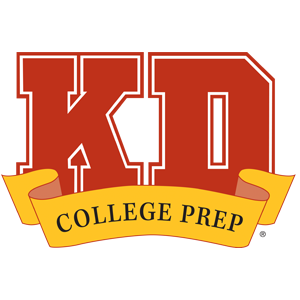As the college admissions process becomes more competitive at the nation’s top schools, applying early action (EA) or early decision (ED) has become increasingly more popular among applicants.
For the Class of 2027, Brown University reported a 10-percent increase in ED applications, while Dartmouth reported a 14-percent increase. The University of Notre Dame saw a total of 11,163 Restrictive Early Action (REA) applications, up 15 percent compared to the previous year.
In recent years, families have struggled to find ways to stand out in a vast applicant pool. As some schools shifted to test-optional admissions, application numbers skyrocketed at the nation’s most popular universities. Meanwhile, it’s becoming harder than ever to determine what makes the ideal college application.
One popular strategy for maximizing a student’s odds is to choose to apply at an earlier deadline. In this post, we explain what earlier application deadlines really mean for students and the reasoning behind the surge in early applications over the years.
What Does It Mean To Apply Early For College?
Applying early means choosing an earlier application deadline. Sometimes, this means accepting certain conditions if accepted, which we explain more in the next section of this article. Usually, early college application deadlines fall in October or November, but this can vary depending on the college or the degree program to which you apply.
There is no standardized deadline for all universities, but November 1 is a popular EA or ED deadline among the top 150. However, it’s important to do your due diligence and keep close track of deadlines for each of the schools on your college list.
The greatest benefit of applying early, aside from a smaller applicant pool, is receiving your admission early. The time between the application deadline and the acceptance letter is usually about a month. Rather than having to wait until March or later like you would with a regular decision, you’ll typically know if you got in before the end of the year.
The ability to spend your last semester of high school stress-free is appealing to a large number of students. But keep in mind that decision dates can vary, and there’s always the possibility that a school defers your application to regular decision. (A deferral means that the college will make a decision at a later date. If you apply early, this usually means their decision will arrive when regular decisions are sent in the spring.)
There is no preferential treatment given to early applicants. However, the number of applications received for early action and early decision is typically smaller. With less applications to comb over, admissions counselors may have more time to review your application. However, the level of merit tends to be especially high for early applicants. These are students who have planned ahead, so it’s likely that they’ve spent the extra time and given special attention to detail when working on their applications.
Early Action vs. Early Decision
It’s important to know the definitions of early action, early decision, and restrictive early action. There are critical differences.
- Applying early action is non-binding. Accepted students will have the opportunity to weigh their options before making a final decision.
- Applying early decision is binding. Accepted students have already agreed to attend the college before acceptance.
- Applying restrictive early action (also called single-choice early action) is non-binding, but it requires students to sign an agreement stating that they will only apply early to one college.
Yes, we know that it’s strange. Colleges ask students to agree to attend or limit other options without having a clear picture of cost and financial aid. Primarily, they want to know that you’re serious about attending. But depending on your financial situation and how much you love a specific college, you may consider making this decision.
Here are some other noteworthy aspects of the two options:
When to Consider Early Action
Early action allows students to receive other acceptance letters, assess varying financial aid offers, and take more time to determine which school is their perfect match. This choice is beneficial if you are prepared to apply early.
Restrictive early action is similar to early action in that it’s non-binding. However, the main difference is that restrictive early action requires you to agree to apply early to only one college. If you go against this agreement and decide to submit early applications to multiple universities, a university may retract your acceptance. Ideally, you’d choose this option if you have a top choice in mind and are adequately prepared for submitting your application at the earlier deadline.
These deadlines’ non-binding formats allow students to take last-minute campus visits, discuss important decisions with family, and determine what is best for their financial future. Think of it this way—you are just acting early. You are not deciding early.
When to Consider Early Decision
Early decision is a binding If you receive an early decision acceptance letter, you are required to enroll and withdraw applications to other schools. This tends to be outlined in a contract that is signed by the student, their parents, and a school guidance counselor. In other words, you are deciding early.
Additionally, Common App® grants you one early decision application, so it’s important to be confident about your decision. If a school discovers you have submitted more than one early decision application to a variety of schools after admitting you, they can retract their offer.
The only way to withdraw your application after an early decision acceptance is if their financial aid offer is unsatisfactory or not what you expected, but each agreement is different. Read over it carefully! Many times you will not know your official financial aid offer until after your acceptance letter arrives.
Early decision is recommended most often for families who can easily afford the cost of attending the college in question, have a top choice in mind, and feel adequately prepared for admission.
While the risks of an early decision application may seem high, it also allows you to show a school your dedication and loyalty. If you feel you are a great candidate for your dream school, then an early decision may be the right choice for you. But only choose this route if there’s an obvious top choice, regardless of cost.
Is It Better to Apply Early or Regular Decision?
Well, it depends. Some students have extracurriculars and tough courses during the fall of senior year, so it’s not easy for them to commit to an early application deadline. There are many complex pieces of a college application, such as the essays. It’s better to give yourself time to perfect each piece rather than submit a half-baked application.
On the other hand, planning ahead can be beneficial. Many former KD students who have chosen to apply early confess that it is a relief to know where you will be attending school earlier. Regular decisions can arrive as late as April of senior year, while early decisions usually hit the inbox in December. Aside from the abundant stress relief, deciding earlier allows students early access to orientation dates, housing options, and financial aid resources.
Does Applying Early Increase Your Chances of Acceptance?
While the data doesn’t show an obvious benefit to applying early in general, there may be implied benefits. If you are not qualified for a specific university, applying early likely will not increase your chances of being accepted. For strong candidates applying to reach schools, choosing an early deadline may make your application slightly more attractive.
To summarize, applying early on its own is not a secret entrance to the nation’s top schools. But if you have great grades, high test scores, and participate in extracurriculars, applying early and showing your interest could be what pushes your application into the accepted pile.
Is Applying Early Becoming More Popular?
Since 2018, many schools have seen an increase in the number of early applications. Dartmouth announced a 45-percent increase in early applications over the past three years. Duke, Northwestern, and Notre Dame all witnessed over a 50-percent increase in the amount of early action applications received. Ivy League schools have seen more than a 25-percent increase in early action applications, with Harvard seeing the largest increase at 48.2 percent.
While universities continue to see a climb in their EA/ED applications, acceptance rates for early action and decision applicants have not significantly increased. In fact, many colleges have reported that early acceptance rates have dropped in recent years.
Below are a few of the early admission rates for the Class of 2027 at popular colleges:
- Harvard University, Restrictive Early Action: 7.6%
- Yale University, Restrictive Early Action: 10%
- Brown University, Early Decision: 12.9%
- Dartmouth College, Early Decision: 19%
- Duke University, Early Decision: 16.5%
- Vanderbilt University, Early Decision: 15.7%
- Rice University, Early Decision: 15.2%
Overall, most colleges in the top 50 have higher acceptance rates for their EA/ED application rounds than their overall admissions rates, which suggests that applying early could lead to better outcomes for qualified students. However, these statistics only examine the early applicant pool and do not take into account regular decision applications, which tends to be the most popular deadline.
Colleges have also reported record-low early admittance rates for the Class of 2027. In other words, we’ve seen a drop in early admission rates that correlates with the recent growth in popularity.
Since 2018, many schools have decided to stop releasing early admissions data. This list includes Stanford, Princeton, University of Pennsylvania, Texas A&M, UCLA, among others.
Should I Choose to Apply Early?
The college admissions process is stressful. Ultimately, the decision to apply early is up to you. Trust yourself and do your research. We urge all students to consider applying early. If you need extra help, here is a breakdown of all the pros and cons of applying early.
Pros
- The applicant pool is much smaller when you apply early.
- Several colleges have higher admission rates during their early application cycle.
- Students admitted earlier have earlier access to scheduling and housing resources.
- Applying early means you receive acceptance letters early too. Early-admitted students can enjoy their final semester of high school without the anxiety of waiting for acceptance letters.
Cons
- The applicant pool, though smaller, is very competitive.
- Accepting an early decision enrollment offer prevents you from comparing financial aid packages.
- Applying early requires a greater long-term commitment and requires good time management.
- Some students who are accepted early struggle to maintain their GPA in their final semester. If your final GPA drops significantly, a college can rescind their offer even after you’ve enrolled.
- Accepting an early decision offer and withdrawing all other applications can close the door on other opportunities.
Should I Apply Early For Competitive Degree Programs Or Scholarships?
It’s important to also note that schools sometimes offer earlier application deadlines for competitive degree programs, honors colleges, and scholarship programs. These are sometimes referred to as “priority” deadlines. For example, Texas A&M’s undergraduate engineering program offered an October 15th deadline for the 2023-2024 application cycle, which was over a month before the Dec. 1st regular admission deadline.
Your unique goals may require you to apply earlier than regular decision. Remember to research your desired degree program and scholarship opportunities at each college on your list. If you can’t find the answers online, contact the college’s admissions offices.
Need help with the college application process?
The college admissions landscape has changed drastically over the past few years, and it can be hard to keep up. Our college counseling team is here to help guide your family. We also offer the Apply Now! Boot Camp to give students a head start on their applications and essays. To learn more about our programs, schedule a free consultation with a member of our team.














































